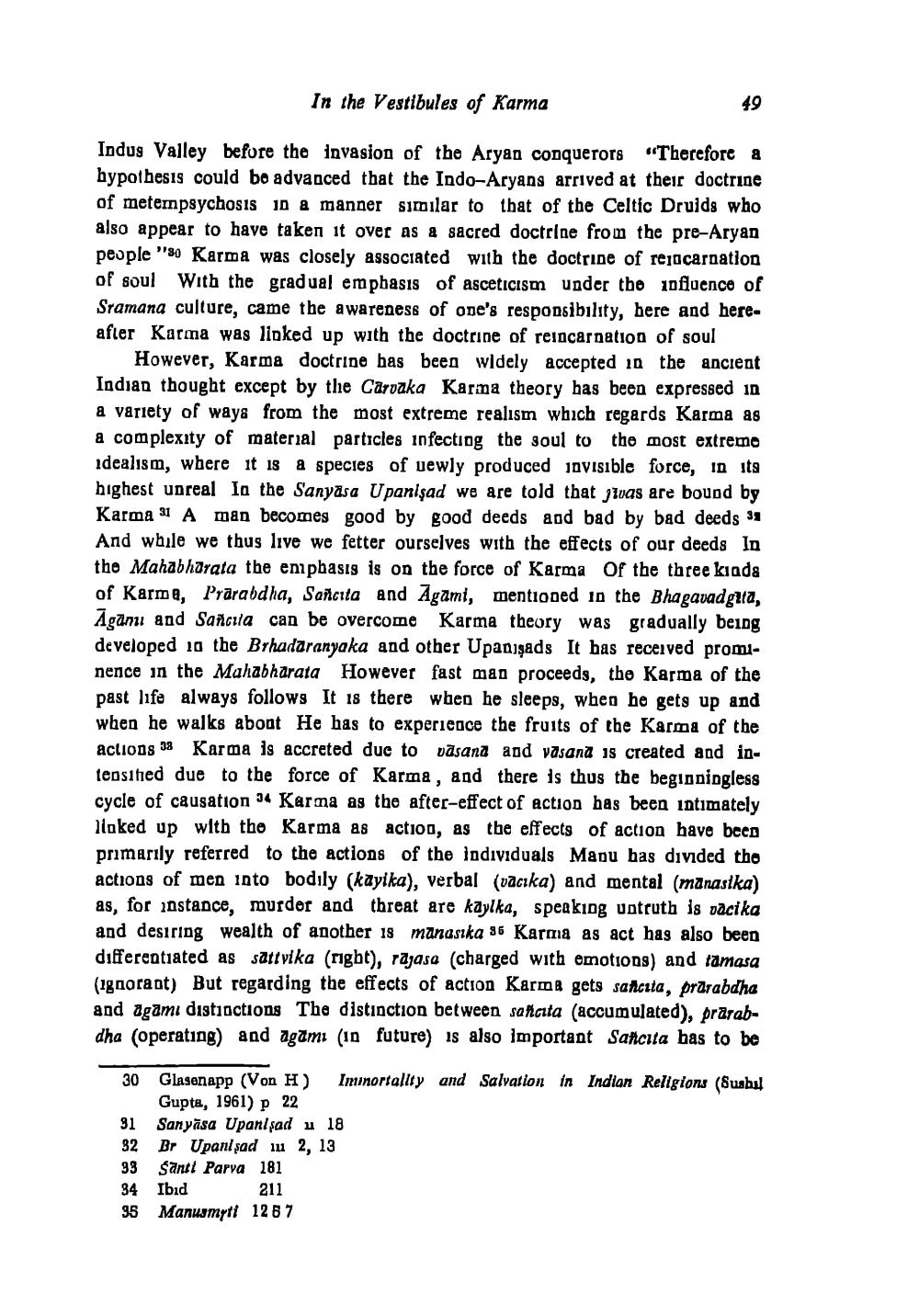________________
In the Vestibules of Karma
Indus Valley before the invasion of the Aryan conquerors "Therefore a hypothesis could be advanced that the Indo-Aryans arrived at their doctrine of meternpsychosis in a manner similar to that of the Celtic Druids who also appear to have taken it over as a sacred doctrine from the pre-Aryan people "30 Karma was closely associated with the doctrine of rejecarnation of soul With the gradual emphasis of asceticism under the influence of Sramana culture, came the awareness of one's responsibility, here and hereafter Karma was linked up with the doctrine of reincarnation of soul
However, Karma doctrine has been widely accepted in the ancient Indian thought except by the Carvaka Karma theory has been expressed in a variety of ways from the most extreme realism which regards Karma as a complexity of material particles infectiog the soul to the most extremo idealism, where it is a species of uewly produced jovisible force, in its highest unreal lo the Sanyāsa Upanlşad we are told that jiuas are bound by Karma 31 A man becomes good by good deeds and bad by bad deeds 31 And while we thus live we fetter ourselves with the effects of our deeds in the Mahabharata the emphasis is on the force of Karma of the three kiada of Karma, Prārabdha, Sañcita and Agami, mentioned in the Bhagavadgua, Aganu and Sancıla can be overcome Karma theory was gradually being developed in the Brhadaranyaka and other Upanışads It has received prominence in the Mahabharata However fast man proceeds, the Karma of the past life always follows It is there when he sleeps, when he gets up and when he walks about He has to experience the fruits of the Karma of the actions 38 Karma is accreted due to vasana and väsand is created and inteosified due to the force of Karma, and there is thus the beginningless cycle of causation 34 Karma as the after-effect of action has been intimately lloked up with the Karma as action, as the effects of action have been primarily referred to the actions of the individuals Manu bas divided tho actions of men into bodily (kayika), verbal (vacıka) and mental (manastka) as, for instance, murder and threat are käylka, speaking untruth is sacika and desiring wealth of another is manasika 36 Karma as act has also been differentiated as sattvika (rigbt), rāgasa (charged with emotions) and tamasa (ignorant) But regarding the effects of action Karma gets sancita, prärabdha and agāmı distiactions The distinction between sancita (accumulated), prarabdha (operating) and agami (in future) is also important Sancita has to be
30
Salvation in
Indian Religions (Susbil
91 32 33 34 95
Glasenapp (Von H) Iminortality and Gupta, 1961) p 22 Sanyāsa Upani sad u 18 Br Upani şad iu 2, 13 Santi Parva 181 Ibid 211 Manusmyti 12 8 7




